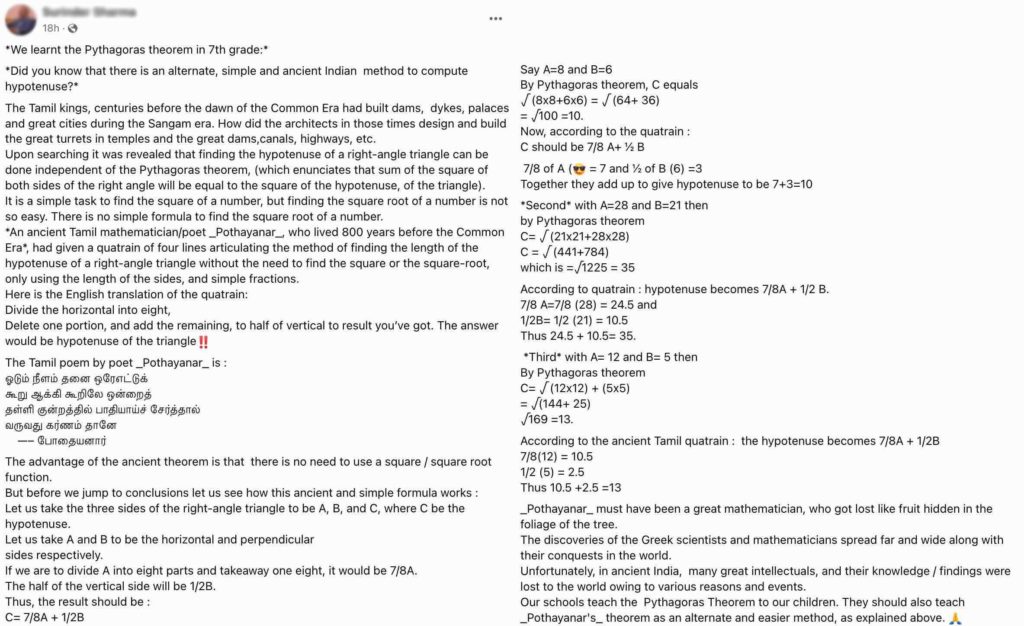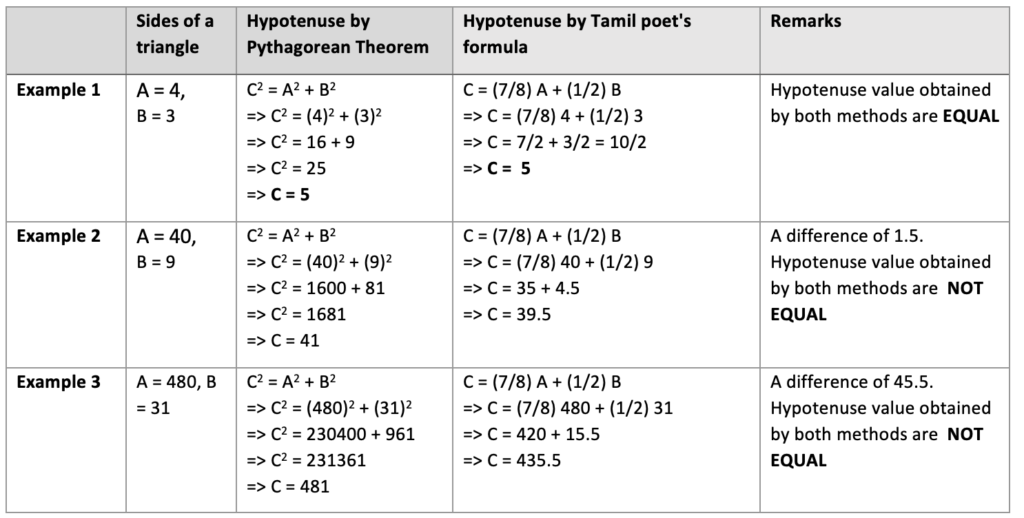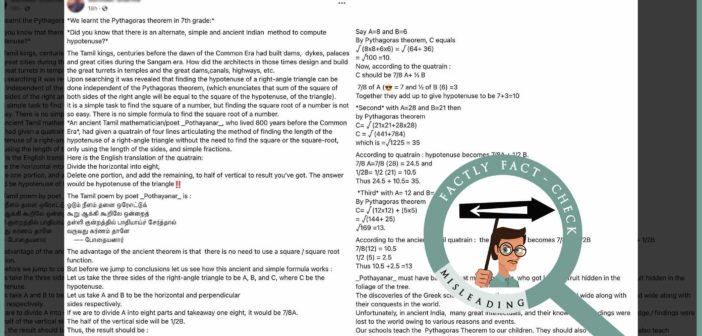A post is being shared on social media with a claim that “an ancient Tamil mathematician/poet (Pothayanar), who lived 800 years before the Common Era, had given a quatrain of four lines articulating the method of finding the length of the hypotenuse of a right-angle triangle without the need to find the square or the square-root, only using the length of the sides, and simple fractions”. It is being shared as an alternative to the Pythagoras theorem. Let’s fact-check the claim made in the post.

Claim: An ancient Tamil poet’s method finds the length of the hypotenuse of a right-angle triangle only using the length of the sides, and simple fractions; without the need to find the square or the square root.
Fact: The formula attributed to a Tamil poet in the post does not give accurate results in all scenarios. Only in some cases, the results are accurate. Also, the given formula to find the hypotenuse length does not work if the smaller side is taken as the base/horizontal (i.e., interchanging A and B in the given formula). The Pythagoras theorem works even if A and B are interchanged. Hence the claim made in the post is MISLEADING.
The formula attributed to a Tamil poet in the post is C = (7/8) A + (1/2) B [where A is the base, B is the perpendicular, and C is the hypotenuse of the triangle]. Let’s check whether the formula holds true in all the scenarios.

In the table above, it can be observed that the formula attributed to the Tamil poet does not give accurate results in all the scenarios. Only in few cases, the results are accurate. Also, the given formula to find the hypotenuse length does not work if the smaller side is taken as the base/horizontal (i.e., interchanging A and B in the given formula). The Pythagoras theorem works even if A and B are interchanged. If we reverse the A and B values in Example 1, we get hypotenuse as ‘5’ using the Pythagoras theorem, but ‘4.625’ using the Tamil poet’s formula.
While we found the reports of the actual Pythagorus theorem being attributed to ‘Baudhayana Sulba-sutra’, we could not independently verify whether any Tamil poet mentioned about the other formula given in the post.
To sum it up, the formula for calculating the hypotenuse of a triangle, which is attributed to a Tamil poet in the post, does not give accurate results in all the cases.



